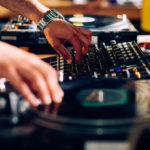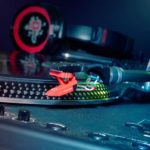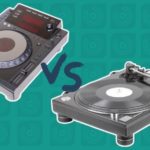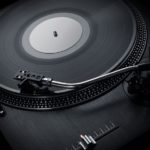Direct drive turntables are very responsive and geared toward performance. Belt-driven turntables are generally more delicate. They don’t have a great response time; however, they can provide some of the best sound quality available.
If you’re a DJ or turntablist looking to get your first set of decks, or an audiophile searching for a high-end record player, knowing the difference between belt and direct drive turntables is very important.
It’s been a long time since I got my first turntables. Way back in the nineties, I was fortunate enough to have a now world-known DJ and turntablist school me on the differences between a belt and direct drive turntables. I’ll never forget bringing home my first belt-driven from the pawnshop; it still almost feels like yesterday.
For individuals interested in performing with turntables, either as a DJ or turntablist, getting a decent pair of direct drive turntables is going to make a lot of difference. But why is that? Keep reading to find out!
Direct Drive vs Belt Driven Turntables (In Detail)
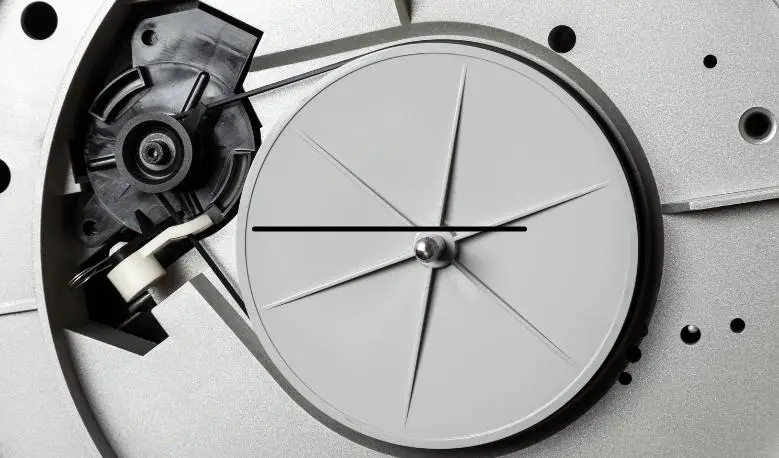
Why Consider A Belt Driven Turntable
Belt-driven turntables can represent the Holy Grail of music listening devices for the audiophiles out there. This is due to the design of belt-driven decks. The method of rubber belt-driven turntables places the motor that spins the record away from the platter. This ensures that there is no vibration noise from the spinning drive mechanism. in basic terms there is an elastic belt that connects the motor to the spinning platter.
The most pristine audio quality is paramount for high-end listening and recording purposes. Belt drive turntables can cost thousands of dollars. Still, they also deliver the quality required and desired by many.
Here is the extreme high-end of belt drive turntables.
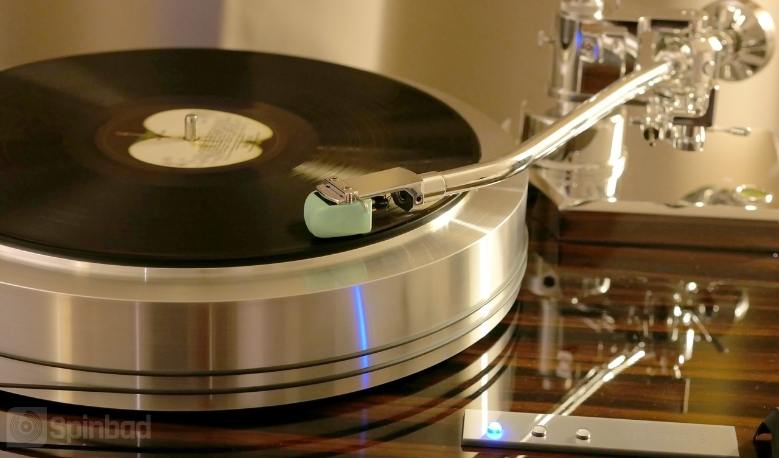
Belt drive turntables can also be inexpensive for beginner DJs or vinyl record collectors to get started.
Learning the basics of beatmatching and mixing is possible with belt-driven decks. My first three sets of turntables were all belt-driven, and by the time I got my own direct-drive Technics 12s, I was a good enough DJ and budding turntablist to actually rock them.
Another aspect of belt-driven turntables that can be extremely useful is the portability of some models. You can find some really great and reasonably priced portable belt-driven turntables on the market.
These can be great tools for DJs and collectors visiting flea markets, thrift shops, and other places that don’t have a listening station. Most store owners are cool and let you listen with your own turntable. Don’t forget to bring your headphones too!
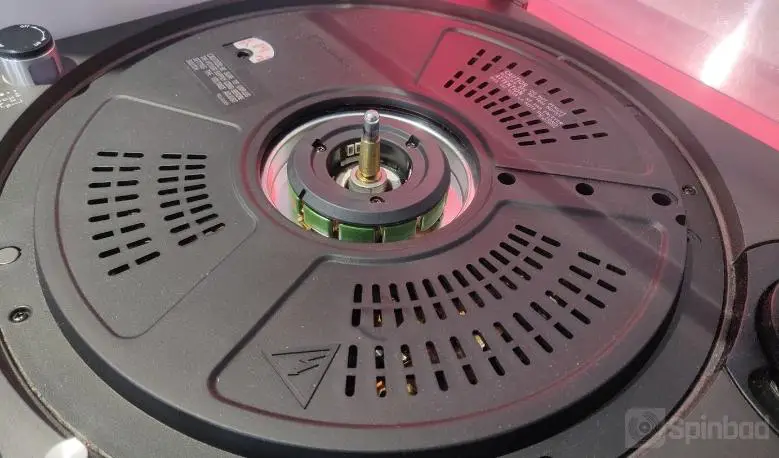
Why Consider A Direct Drive Turntable
Direct drive turntables are a real DJ or turntablists life. They eat, breathe and sometimes sleep next to their decks. The reason why the direct drive is so crucial for performance comes down to response time. There are different terms for this phenomenon, but I’ll refer to it as response time for this article. This is the time it takes the turntable platter to return to full speed after interruption.
So, for instance, when a DJ scratches a record, they’ll apply pressure on the record to stop it from spinning, pull it back against the way it was turning, then release it to continue playing. This is basically a scratch. When done on a belt-driven turntable, most of the time, it’s going to take a second for the platter speed to return to its original state. This causes an unwanted effect on the scratch.
It’s a very unique sound effect, and you’d recognize it instantly if you heard it. I’m not sure how to describe it in writing other than maybe “MRRRRUHHHHHHHHHHEEEEEAAAAAAHHHH,” or something like that.
Any tricks that a DJ or turntablist wishes to incorporate into their routine will be affected by this problem.
Direct drive turntables are usually built more solid than their belt-driven counterparts. They aren’t fragile, usually heavy, and most importantly, the motor is underneath the record.
Depending on the model, the response time for direct-drive turntables can be almost perfect. The higher-end Technics are pretty solid. When appropriately maintained, they can instantly return the record’s playing speed after interruption.
Scratching and juggling are essential to a great DJ routine, and taking these practices to the next level is turntablism. A DJ can get started on belt-driven decks; direct-drive turntables are mission-critical to advance to a professional level.
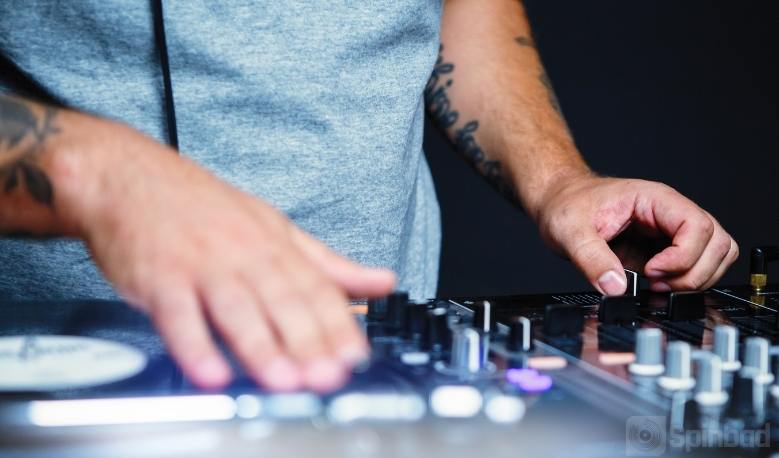
When I started, it wasn’t easy to get turntables. With the Internet, it’s possible to find some good deals if you invest time shopping around. Buying used is a decent option in a lot of cases. Be wary here though, because Tech 12s are infamous for having timing issues with the motor. I actually had this happen.
After a few decades of Djing, the best advice I can give is to learn about turntables before purchasing. In addition, try to gauge your ideal usage and how long you intend to be involved with DJing or collecting.
For beginners, I’d recommend taking a trip to the nearest store with pro audio equipment available on the showroom floor. Spend some time really examining the turntables and playing around with them. It can feel like you KNOW you’ll be the next massive DJ initially, but spending some time on lower-cost belt-driven decks isn’t a terrible idea.
Higher-end turntables can typically be resold without too much trouble.
Direct drives are no exception, especially with the current DJ market. So, if you buy some nice Technics and then decide that maybe the Viola or something else is your jam, you’re not at a total loss.
Owning a set of direct drive turntables is essential for professional DJs and turntablists. Technics SL 1200s/1210s are industry-standard direct-drive turntables used and loved by many world-known artists.
Click here to learn more about the best Technics Turntables.
Can You DJ With Belt Drive Turntables?
Direct drive turntables tend to be a little more expensive unless we’re talking super-high-end belt drives. This was why I ended up with belt-driven decks when I first started.
As I know from experience, it’s possible to learn to DJ on belt-driven decks. For straight-up mixing and beatmatching, it’s not that bad. As long as the turntable can change the pitch and adjust the platter speed, you’re good to go.
It is possible to scratch and juggle on a belt-drive turntable. I’d call the experience limited and cumbersome though.
One thing I took away, in the end, is that it was much more challenging to learn on the belt-driven decks. All of this is important to keep in mind as you begin your DJ or turntablist journey.
Click here for our guide on the Best Turntables For DJing.
DJ Tips For Mixing On Turntables
I want to offer a bit more of a clear path than I had for any aspiring DJs or turntablists reading this article.
I personally love Hip Hop and hardcore turntablism, like the Invisibl Skratch Piklz, so when I started, my end goal was to be a turntablist.
Regardless of your desire to go in that direction, I have a couple of words of wisdom to leave you with.
Start With The Basics
Starting with a pair of belt-driven turntables is fine. Using them is going to force you to have light hands. You may find it frustrating at first, but if you eventually switch to direct drive, you’ll find your earlier experience will pay off, and you’ll find it much more manageable.
If you have the means and are dead serious about DJing, then, by all means, start with a set of 1210s. If they’re out of your price range, don’t let it stop you!
Become A Mixing Expert
Learn how to beatmatch. Practice this repeatedly until you can effortlessly match two beats without any error whatsoever (and without sync if you are using DVS)
Most importantly, learn the songs you’re mixing well enough so you can use the measures and bars of songs to make invisible mixes. Learn how to count the beats and bars and use this as your secret weapon to really stand out.
Utilize the Power Of Keying
Understand and use keying in your mixes, so they remain in tune. Once you learn this, your entire world will change as a DJ.
You’ll listen to mixes you utilized to love and hear things you can’t believe your favorite DJ did, not in a good way. You’ll instantly hear key clashes in mixes and begin noticing tuning problems in songs as well.
Check out our article about harmonic mixing.
Take Proper Care Of Pro Audio Gear
Maintaining your equipment is so essential that I could write an entire article.
The turntables need to be serviced, especially direct drive turntables. This is very important if you’re traveling a lot as a DJ and moving the equipment around a lot.
Even studio equipment needs to be serviced. Keep the gear as clean as you can in between servicing and always treat it with extreme care.
Invest In Covering And Protecting Pro Audio Gear
Invest in a good case or coffin for your turntables. I’d rank this pretty high on the list of essential equipment.
If you plan to gig and move your decks around a lot, try to find a way to get some good flight cases or a coffin. I used to DJ small clubs and house parties, and both sets of my first Technics got beat up pretty bad.
The repair costs far outweigh the cost of a protective case in the long run.
Related Questions
What Is the Difference Between Belt-Drive and Direct Drive Model?
The design of a direct drive turntable places the motor that spins the plate the record spins on directly beneath. A belt-drive turntable has a belt connected to a motor placed away from the plate the record spins on. Belt-drive turntables can produce better sound quality in super-high-end environments. Direct drive turntables are great for DJs and turntablists in more of a performance atmosphere.
Can I Mix On a Belt Driven Turntable?
Belt-driven DJ turntables exist, and it’s absolutely possible to mix on them. For beginners, it’s often more cost-effective to start with belt-driven turntables and then buy direct drive later. Some belt-drive turntables are designed with mixing in mind and are almost comparable to direct drive decks. One main thing to ensure is that the turntable has pitch control. If a DJ intends to mix, then having the ability to change the speed or pitch is required.
Can I Scratch On a Belt Driven Turntable?
One of the drawbacks of belt-driven turntables is the time it takes them to get the record back up to the speed it was playing at after a DJ scratches. It is, however, possible to scratch on belt-driven turntables.
With some practice, a DJ can slightly push the record forward after interrupting it for a trick. It’s not ideal, but building some impressive routines with belt-driven decks with time, patience, and creativity is possible.
Do Belt Drive Turntables Cost More?
Belt-driven DJ turntables can be very cost-effective for beginners. They create a great entry-level opportunity for budding DJs to get started. High-end belt-driven turntables are not meant for use as a DJ turntable.
Do Direct Drive Turntables Cost More?
Direct-drive turntables cost more than lower-end belt-driven DJ turntables. There are high-end belt drive turntables that can exceed the cost of a lot of direct drive decks. In the context of turntables used as DJ gear, direct drives are generally more expensive.
Direct drive turntables are usually built from higher quality material, heavier, and all-around more rugged. On the other hand, belt drive turntables could almost be considered fragile. There will be a difference in cost for the turntable’s torque. Some extremely low-end or poorly maintained models don’t have high torque and function like a belt-drive model.
What Is The Best Turntable?
Direct-drive turntables are the best option for serious, professional DJs and turntablists. The stability, weight, chassis, and mode of operation to spin the plate are all excellent. These aspects make direct drive turntables highly desired and outweigh their belt-driven counterparts. Most direct-drive turntables are so sought after they can be resold and retain the original purchase value or even exceed it in some cases.
For extreme high-end listening, belt-driven turntables might be the better option. The direct-drive design with the motor under the spinning record can produce vibration noise in recordings and playback. Motor vibration noise can cause problems and is highly undesirable in extreme high-fidelity environments.
A belt-drive model for brand new, aspiring DJs and turntablists low on cash could be an excellent option. It’s how I started and enjoyed many years of learning before getting my Tech 12s and taking my skills to the next level. Many other DJs, far greater than I have also taken this path.
Want to learn more? Click here to find out How To Clean Vinyl Records.
We hope you love the products we recommend. We may collect a commission if you purchase through one of our links. This doesn't cost you anything extra. If you do, thank you! As an Amazon Associate, I earn from qualifying purchases.

